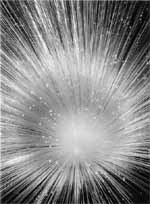Guiding light
 in recent years, optical fibres have proved crucial for the information technology sector, as these fibres allow much better and quicker transfer of data. In the west, optical fibres have been used by the telecommunications industry instead of conventional wires with great success. Thanks to these, there has been tremendous growth in the use of networks for audio, video and data transfer. Though developed in the 1950s, optical fibres came of age only in the late 1980s.
in recent years, optical fibres have proved crucial for the information technology sector, as these fibres allow much better and quicker transfer of data. In the west, optical fibres have been used by the telecommunications industry instead of conventional wires with great success. Thanks to these, there has been tremendous growth in the use of networks for audio, video and data transfer. Though developed in the 1950s, optical fibres came of age only in the late 1980s.
Now, to take the technology into the next millennium, Jonathan Knight and his colleagues from the University of Bath, uk , have designed an optical fibre, which is fundamentally different from what has been used until now. This discovery could well lead to another revolution in designing more efficient fibre-based network elements. The basic idea of the conventional optical fibre is that of total internal reflection. To the layman, it means no data loss, unlike in conventional wires and cables, which are all prone to some loss of data. The basic medium of fibre optics is a hair-thin fibre that is made of plastic, but most often of glass. A typical glass optical fibre has a diameter of 125micrometers (each micrometer is a millionth of a meter). This is actually the diameter of the cladding, or the outer reflecting layer. The core, or the inner transmitting cylinder, is commonly about 10 micrometers in diameter. The refractive index of the central core is larger than that of the outer covering. This is the secret of the total internal reflection that fibre optic cables are famous for. Light rays beamed into the fibre can propagate within the core for great distances with remarkably little attenuation or reduction in intensity. The degree of attenuation over distance varies according to the wavelength of light and other factors, such as the composition of the fibre.
In the new fibre developed by Knight and his team, the core has a lower refractive index than the cladding as a result of which total internal reflection is not possible. The fibre is basically a photonic crystal, a structure that is repeated in space, with a periodic array of air holes placed at the vertices of a honeycomb like structure. The key feature of this new fibre is that it
Related Content
- Climate adaptation and its measurement: challenges and opportunities
- Costs and CO2 emissions reduction benefits of potential phase 3 fuel consumption standards for India’s passenger vehicles
- Gender dynamics in transboundary water governance: feminist perspectives on water conflict and cooperation
- 2022 annual trends and outlook report: agrifood processing strategies for successful food systems transformation in Africa
- Living in the light: the Bangladesh solar home systems story
- Order of the National Green Tribunal regarding unauthorised structures on the beaches of Goa, 19/10/2020
